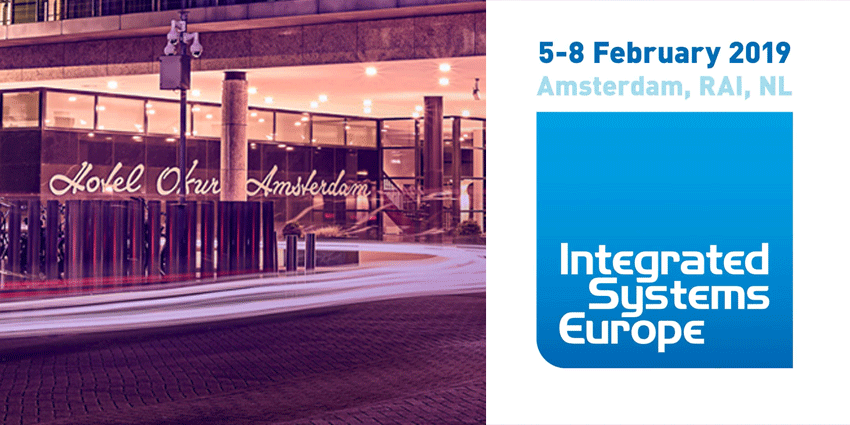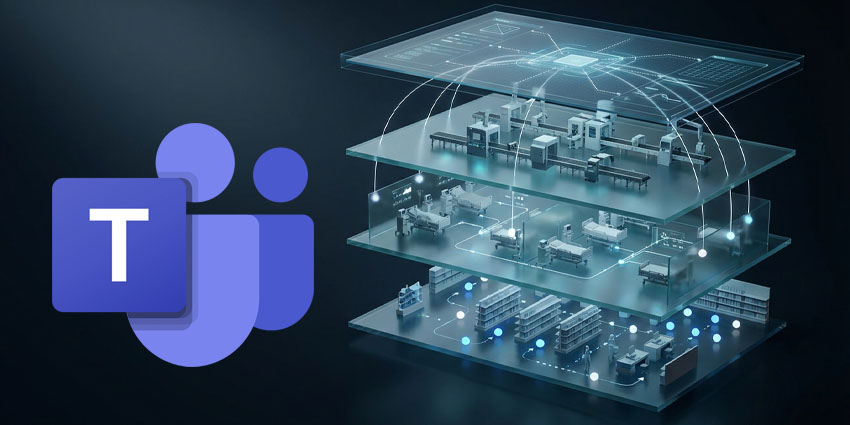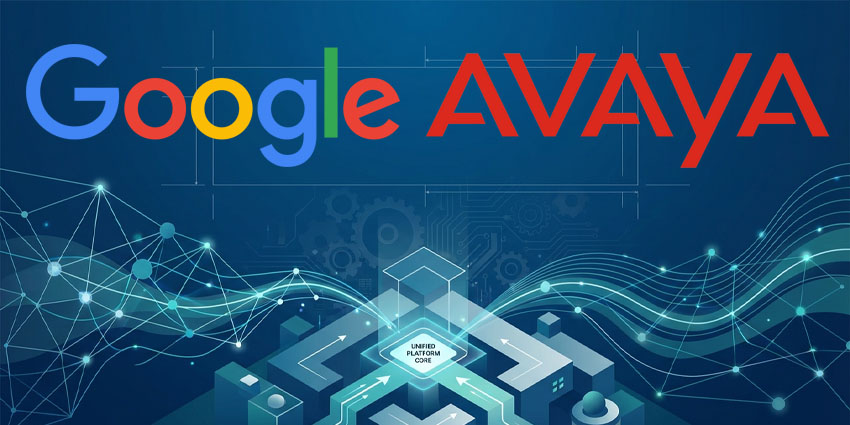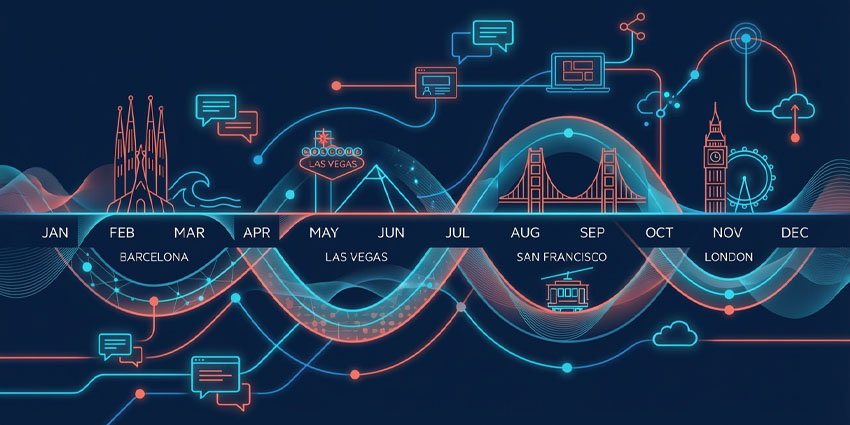The convergence of audiovisual solutions (AV) and IT technologies and processes has been a topic of conversation for several years – but, it seems, almost exclusively among AV professionals. Among IT professionals? Not so much. The concern of those AV professionals is that they perceive the progressive ‘IT-ification’ of their industry as a potential threat.
According to Stijn Ooms, Product Director, EMEA at Crestron, the AV industry should have nothing to fear.
“We have skills that the IT industry needs,”
he believes. “We are a speciality service and we are experts in our field. We have a deep knowledge of audio and video and user experiences in the conference and meeting space. We are the experts in how those systems work on the network.”
The perceived issue at the heart of those conversations is that, once upon a time, AV solutions stood as islands. A projector in a conference room. A videoconferencing suite. A digital signage installation. AV people felt they could – perhaps should – just be left to do the job they’ve done so well for a long time.
Mission critical
What changed everything was, first, ubiquitous networks. We could connect anything to anything – and we did. Far more significant, perhaps, was that the AV industry could be said to have become a victim of its own success: audiovisual solutions became critical, because they were at the heart of how a business communicated – within itself, and with the outside world. As such, they needed to be included into the corporate infrastructure and managed in the same way other significant corporate assets were managed. For many organisations, that was the beginning of a journey that’s become known as ‘digital transformation’.
“Part of the digital transformation project involves the communications and collaboration tools within the organisation,” says Andrew Hug, Area Sales Vice President, Systems Engineers, EMEA and APAC at Polycom. “We are seeing that many big corporates are reviewing their ways of working and the systems and solutions they have in place, and whether they are in line with the goals and objectives of a modern corporation. We’re also seeing that many big firms are introducing new ways of working and, with them, new solutions that enable their workforce to be at their most productive and creative.”
Thomas Walter, who is Section Manager, Strategic Product Marketing at NEC Display Solutions Europe, analyses what may be driving those new ways of working.
“Consensus and cooperation are increasingly the preferred style of major companies, with less emphasis on top-down-decision making,” he believes. “That’s resulted in a growing demand for smaller meeting and collaboration areas such as huddle spaces where employees can interact, discuss and be creative; everyone should be able to actively participate.”
Integrated, connected
“Beyond that,” he continues, “increasingly, employees are working remotely, either from a home-office or, in the case of larger organisations, from multiple branch locations. These employees need to be well integrated and connected. This need is addressed with tools such as interactive displays that support remote participation and collaboration in order to share ideas, regardless of location, in real time.”
The need for more flexible and dynamic workspaces, coupled with a new generation of tech-savvy employees, has resulted in a rise of sophisticated workspace solutions. Oblong’s Mezzanine platform is an example of this, providing enterprises with visual collaboration technology for use in meeting room environments. Real-time content sharing from multiple sources, gestural interaction and multi-screen setups encourage collaboration from teams of all sizes.
For any professional looking to develop a greater understanding of how new, more collaborative and remote ways of working are being enabled, there is only one show in town.
As well as its traditional audience of AV professionals, Integrated Systems Europe – ISE – is increasingly attracting IT professionals anxious to know more about what AV is and what it can do. ISE is the world’s largest audiovisual show: over 80,000 visitors passed through the doors of the RAI exhibition centre in Amsterdam, visiting over 1,300 exhibitors, at ISE 2018. ISE 2019 takes place in the same venue from 5 – 8 February.
One of the attractions of ISE is that it features the latest developments not only in meeting rooms and conferencing, but in technologies, products and solutions that are broadly applicable across the corporate landscape.
In addition to the significant exhibition space, ISE hosts leading professional development sessions and industry conferences to ensure visitors can make the most of their time attending the event.
Taking place on 4 February 2019, the day before ISE 2019 opens its doors, the Smart Building Conference is a one-day, twin track event for professionals working in the smart offices and connected buildings industry. Exploring the latest technologies, business strategies, market research and workflow case studies, the conference will feature thought leaders from across the world delivering key insight into this fast-paced industry.
Event co-owner AVIXA, the Audiovisual and Integrated Experience Association, is also hosting a conference at ISE 2019 in partnership with the AV User Group. What’s Next…Enterprise AV Integrated Experiences will welcome AV end users from across the industry on 6 February 2019, to discuss workplace experience and design, as well as how to achieve the right meeting room environment.
Game changers
Why do AV professionals believe ISE is an event that is attractive to their counterparts from IT?
“Every year, ISE is the place where vendors introduce new solutions for a range of applications in the corporate sector,” says Peter Mathia, CEO of LANG, a global distributor of visual presentation technology. “Innovative technologies and products are regularly shown here which could be potential game changers. ISE has everything when it comes to displays – from simple screens and installation projectors to complex interactive narrow pixel pitch LED wall applications. The same applies to the audio sector. The show has the ability not only to inform and educate, and to have the opportunity to see what the future holds – but also the ability to inspire.”
“At ISE, visitors can gain hands-on experience of the latest developments that could benefit their organisation, with expert consultancy on hand,” adds Walter. “It’s the place to find answers to the questions and solutions for the pain points companies are facing today.”
“It’s all about the opportunity for visitors to experience solutions for themselves,” believes Hug.
“In the case of collaboration systems, for example, they can evaluate the user interface, the experience and the quality of the solution to ensure it fits their need.”
LANG’s Mathia sees a similar opportunity for those interested in the future of displays.
“The display sector will certainly change in the near future,” he says. “Manufacturers have massively expanded the range of functions of their products, with features such as integrated media players, or the ability to interact with mobile devices like smartphones or tablets.”
“LED is an exciting technology to watch,” he adds. “Can LED cannibalise LCD in the near future? The ever-decreasing pixel pitch of LED is opening up new application possibilities. LED walls, for example, no longer have to stay fixed in one place – they can now be used flexibly and can be built-up and torn down very quickly.”
Excitement
The fact is that, despite the conversations noted earlier, the AV industry has moved forward significantly. The challenge of understanding a new way of working is, for many, more than compensated for by the excitement of becoming integral to their customers’ success. The opportunity that many AV professionals feared would shrink is, in fact, growing as the solutions they bring are demonstrated to deliver real strategic and competitive value.
“It’s our job to meet the IT organisation halfway and embrace their world and their designs using tried and true concepts,” comments Crestron’s Ooms. “Now is the time to take on board the methodologies and architectures that the IT industry has developed over the years, and apply them to AV. Most of all, we need to ensure we deliver on the fundamental expectations of the IT industry: provision, scale, and management.”
ISE 2019 will provide plenty of opportunity to see just how far the AV industry has already moved in that direction.
More information on ISE 2019, and registration.







